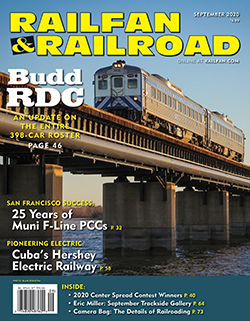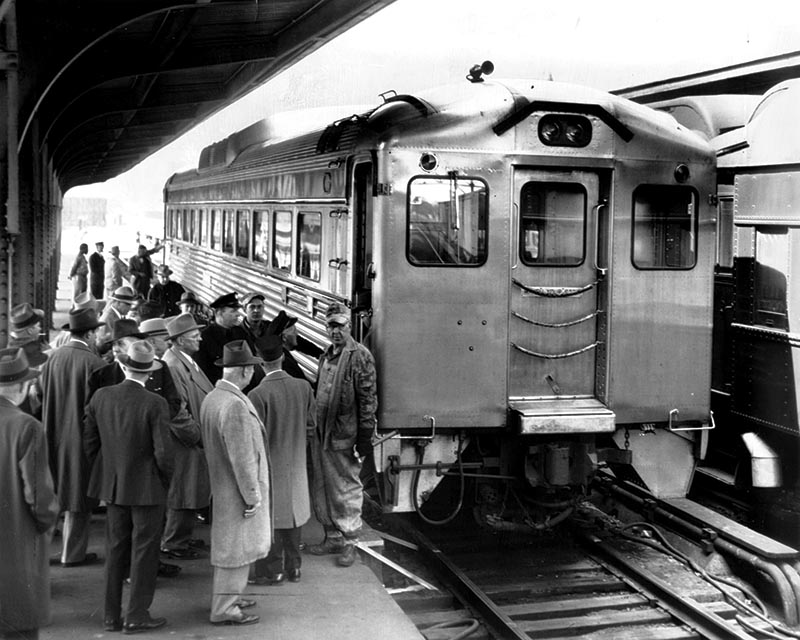 One of the most interesting aspects of our hobby is our attention to equipment rosters. These seem, at first glance, to be relatively straightforward things. A roster is, after all, merely a list. Good rosters, however, do so much more, either by being comprehensive or by being narrow. An expansive roster, such as a compendium of all engines ever owned by Pennsylvania Railroad in its 120-year history, quickly gives a sense, merely from its bulk, just how large and important Pennsy once was and just why they needed to run to five digits for some locomotive numbers. Similarly, a roster can focus on specific equipment, showing not only where it is now, but its entire past career, as does our updated all-time roster of Budd Rail Diesel Cars.
One of the most interesting aspects of our hobby is our attention to equipment rosters. These seem, at first glance, to be relatively straightforward things. A roster is, after all, merely a list. Good rosters, however, do so much more, either by being comprehensive or by being narrow. An expansive roster, such as a compendium of all engines ever owned by Pennsylvania Railroad in its 120-year history, quickly gives a sense, merely from its bulk, just how large and important Pennsy once was and just why they needed to run to five digits for some locomotive numbers. Similarly, a roster can focus on specific equipment, showing not only where it is now, but its entire past career, as does our updated all-time roster of Budd Rail Diesel Cars.
Conversely, a roster can be narrow. Consider the value of a roster of a single place and time. A roster of all freight cars at Clearing Yard of Chicago Belt Railway in March 1943 would be more than a curiosity — it would be a picture of the national economy at the height of World War II. A roster of surviving steam locomotives on Pacific Northwest logging railroads in 1960, meanwhile, would give a great deal of insight into the region’s economic health.
Browsing through old railfan-related magazines, rosters pop up quite often, especially after the war. Often, these were of steam locomotives, created for the purpose of sharing what could be seen and where. Additionally, smaller regional publications frequently included rosters alongside articles about specific railways, or as historical reviews of departed companies. Once the internet came along in the 1990s, one of the first things that railfans put online was equipment rosters.
Rosters weren’t just made for the semi-official record, though. Rather, there’s something of the pleasure of completeness to assembling rosters, and many were and are made by hobbyists who never share or publish them.
Consider the “personal” roster and the British practice of “trainspotting.” Like birdwatching, it requires immense time spent in the field, watching trains, and then recording every locomotive seen. While this is less common in North America, it does happen here. For some reason, though, we North Americans are more likely to incorporate some type of media. The most obvious is the photograph, where the camera replaces paper list-making. There’s a relationship between roster-making and photo collecting, of course. Generations ago, the typical railfan collected so-called “roster” photographs, attempting to assemble two-dimensional locomotive fleets, not dissimilar from collecting baseball cards. Making roster images, and then sharing them online, is not altogether dissimilar.
Yet the plain roster — the straightforward list — has its own appeal. Perhaps this has something to do with the affinity between record-keeping and the railways. It was the rail industry, after all, that largely introduced corporate bureaucracy to the world. Mountains of forms, flimsies, files, and other paperwork were produced by the railways, so much so that there are whole subsets of the railfan hobby devoted to collecting these. And certainly the first equipment rosters would have been produced by the railways themselves, as a means of tracking their own equipment. There is a strange poetry, then, to making a hobby out of railway record-keeping.
The problem, of course, is that every roster is written down, and thus moderately permanent. Equipment, however, gets bought and sold, renumbered and relettered, repainted, reassigned, or scrapped. Some units are lost to time, the ultimate disposition left unknown except to that one person who was there. Every roster becomes dated almost instantly. Yet, isn’t that part of the appeal? Every changed circumstance, after all, calls for the creation of another roster, and another edition after that. The satisfaction of completeness may be the goal, but it will always be just out of reach in a most satisfying way.
—Consulting Editor ALEXANDER BENJAMIN CRAGHEAD is a transportation historian, photographer, artist, and author.



